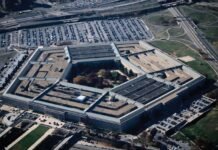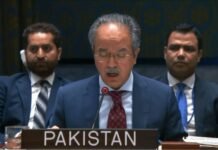It is now commonly acknowledged among International Relations scholars and observers that the days of the US uni-polarity are over.
Countries around the world are seeking to articulate their positions and interests in a world that is becoming increasingly multipolar – a complex task as the rising and the status quo major powers engage in an intense competition.
Similarly, countries of the Americas are also experiencing this new reality. The American continent is very diverse. With more than 30 independent states with different cultures, histories, demographics, political systems, and interests.
Even so, there are some broad commonalities among them. Apart from Canada and the USA, all American countries are part of the Global South. They are also part of the third world, most of them being part of the Non-Aligned Movement as members and observers. Moreover, most of these countries are considered developing nations.
Although complete US dominance in America’s regional politics has declined and China has made some progress in the region, the US retains its self-image as the primary protector in the region and is keen to continue projecting it onto other American states.
Given the history and the current situation of the global order, the question hence arises: how are American countries contributing to the changes in the global order, i.e. the rise of multipolarity and the decline of the USA as a sole superpower.
Before discussing USA’s views on the Americas, a quick history and a brief overview of the USA’s foreign policy focus as a superpower after the Cold War is required to layout a background.
The US as a Superpower
The emergence of two superpowers created a bipolar world order. The bi-polar world of the 20th century was characterized by political competition as both countries vied for influence over other countries and sought to expand their competing interests and ideologies across the world, including the Americas, through various means.
However, as is recorded in the annals of history, the bi-polar world order ended as many Eastern bloc countries moved westwards in the 1980s and the Soviet Union dissolved into multiple independent republics.
The USSR finally succumbed to internal politics and external pressures in 1991, ceasing to exist as the second superpower and a challenger to US hegemony.
As a consequence, the United States emerged the sole superpower and the only global hegemon at the beginning of the 21st century.
During its unipolar moment, the US focused its superpower might on the Middle East and North Africa region. The region became the central focus of American foreign policy, especially after 9/11.
The United States invaded Afghanistan and Iraq and poured millions of dollars into this region to secure its interests. Later, in 2011, it got involved again in the Middle East (Libya, Syria, and Iraq) in the aftermath of the Arab Spring and the rise of ISIS.
However, the US power did not remain unchallenged for long. China, with its powerful economy, and Russia, with its powerful regional ambitions, began to rise to a status where they enjoyed significant influence over world politics in the second decade of the 21st century.

Russia intervened in Syria backing Bashar-al-Assad in 2015 against US interests, a year after it annexed Crimea. China, meanwhile, was gaining ground around the world through its economic diplomacy and the Belt and Road Initiative.
Moreover, powers such as India and the European Union also increased their capabilities and influence – military, economic, technological, and cultural – and rose as prominent independent players in the international order.
The US, observing the rise of China’s influence and perceiving a threat to its dominant position, attempted to disengage from the Middle East to shift its pivot to Asia. This began under the Obama administration and was completed by his successor, Donald Trump.
Then, in 2022, Russia invaded Ukraine. Eastern Europe and Asia-Pacific are now the intense battlegrounds where the US is fighting to maintain the status quo.
However, throughout these decades of shifting geopolitical focus and interests, there was one region that always lurked in the back of the USA’s mind, and the various US administrations never, for once, lost sight of the developments in that region, even while its main focus was elsewhere.
America’s Backyard
The United States has maintained a peculiar view of its role and position in the Americas throughout its history, which evolved outwardly with times and situations, but the underlying premise of which remains the same: The United States of America considers itself the exceptional and dominant power which has the right to be a central player in continental affairs while advancing its interests on the continent.
The US was the first country on the continent to achieve independence from a European power. In the 19th century, it welcomed various independence movements against European colonialism in the Americas.
In 1823, the US adopted the Monroe Doctrine, a foreign policy doctrine that held that the US will consider any further European colonialism or political intervention in the Americas as a hostile act towards the US.
This established the basic premise of the kind of actor the USA considers itself in continental affairs. The United States sought commercial and political opportunity in the newly-independent American republics with the expulsion of the Spanish and other European powers.
This Pre-Cold War era of US relations with countries in its region is characterized by its brutal commercial interests and CIA-backed political maneuvers to maintain them.
During the Cold War, the US considered the region as its sphere of influence and fought hard against potential communist and Soviet inroads.
The Soviet Union contested American dominance in Western Hemisphere as well by supporting communist and socialist parties and guerillas in South America, Central America, and the Caribbean.
The United States used tactics from intervention, regime change, and supporting authoritarian (but anti-communist) dictators to contain communism.
Although having the advantage of short physical distance over the Soviet Union, it did not always succeed; the example of the Cuban revolution is pertinent.
Presently, the United States is the most populous and the most advanced (in terms of economy, military, and political and cultural influence) in the Americas.
It is also a primary destination for hundreds of thousands of Caribbean, Central American, and South American immigrants.
Current US Policies towards the Latin America and Caribbean Region
Fun fact: the largest supplier of oil to the USA is not the Middle East, but the Latin America and Caribbean region.
On the other hand, the region is also a source of serious challenges faced by the US, such as illegal immigration, drug trafficking, other kinds of transnational crime, and terrorism from the Americas.

For its economic opportunity and the threats it presents, it is an important region for the US. The official US position is that it seeks to promote democracy, counter drugs and crime, and increase economic development in the region.
However, actual relations between the US and other American countries entail far more interests and complexities than any official position entails.
There is one regional intergovernmental organization covering all Americas, that is, the Organization of American States (OAS), which was founded in 1948.
Based in Washington D.C, it acts as a forum for all American states to develop peace, security, and cooperation in political, economic, and social spheres.
And yes, the organization is dominated by the US (Cuba was suspended after the Cuban revolution; other states adopting an anti-US stance including Nicaragua and Venezuela have been discouraged to take full part in the activities of the organization).
American Countries’ Views and Policies in the Multi-Lateral Order
First of all, let’s get Canada out of the way. Canada is deeply allied with the US in matters of international politics – it is firmly embedded in the part of G7, and NATO, and is a part of the Global North, Western world, and North Atlantic world.
Although Canada diverges from the US when engaging with countries bilaterally (for instance, it maintains good relations with Cuba), its positions do not vary much from the US.
Responses of the other countries of the Western Hemisphere can be roughly categorized as either bandwagoning to the US power or hedging against it reluctantly or actively.
Most countries oscillate between bandwagoning and comprehensive cooperation to reluctant hedging, depending upon the governments and the context of specific actions.
Mexico
Mexico is one of the most important Latin American countries and a regional player in Central America and North America.
Moreover, the only Latin American country to have a land border with the mainland United States (Importantly, this border is a source of tension between the US and Latin America).

Mexico is part of the North American Free Trade Agreement along with the USA and Canada and maintains other mechanisms of cooperation with its northern neighbor. The US is also Mexico’s largest trading partner.
Although Mexico and the US cooperate in different fields including trade, Mexico is not a full-fledged American ally. Tensions exist between the two countries relating to illegal immigration and transnational crime. Mexico’s views on international and regional matters are not always coincident with the US.
The current President of Mexico, Andres Manuel Lopez Obrador, proposes an alternative vision for the Western Hemisphere, the so-called “new co-existence”. The “New Co-existence” seeks to replace the ‘for or against the US’ approach that had been dominant in the region for two centuries.
He recently promoted his vision on a trip to Central America and Cuba in May 2022, in which he called on the US to do more to address the source of illegal immigration and to lift the sanctions on Cuba.
Moreover, Mexico also welcomes and promotes a multi-polar world order where it can project its interests in the region and find new economic and political allies to reduce its reliance on the US.
Mexico also moved closer to China and deepened bilateral relations after the election of Donald Trump, who was perceived as unfavorable to Mexico.
In conclusion, it has adopted a position of careful or hesitant hedging towards the US and promoted a multi-polar world.
Caribbean Countries (CARICOM)
The Caribbean region is a geopolitical and cultural region made up of island countries in the Caribbean Sea along with former non-Spanish colonies in South America (Guyana, Suriname) and Central America (Belize). Of the sixteen independent countries, eight are republics, while others are commonwealth realms.
Caribbean countries include Antigua and Barbuda, the Bahamas, Barbados, Belize, Cuba, Dominica, Dominican Republic, Grenada, Guyana, Haiti, Jamaica, Saint Lucia, St Kitts and Nevis, St Vincent and the Grenadines, Suriname, and Trinidad and Tobago.
Apart from Cuba and the Dominican Republic (both former Spanish colonies), all other countries are full members of the Caribbean Community (CARICOM).

In addition, the Caribbean region is dotted with small dependencies of the United Kingdom, France, Netherlands, and the United States – making these countries direct stakeholders in Caribbean affairs.
The Caribbean countries gained their independence in the 20th century as a result of decolonization. The US turned towards these new island countries with security concerns under the shadow of the raging Cold War, attempting to counter Soviet and communist influences.
Since the end of the Cold War, however, the nature of engagement between the US and Caribbean countries has changed. It has focused on transnational issues such as climate change, migration, and economic development.
The economies of many Caribbean nations rely on tourism, investment and financial services, and trade, most of which come from the US. Moreover, the US comes out as an ally against the threats they face and the interests they perceive.
Even so, these countries are politically and culturally diverse, and bilateral relations between the US and each country are different, as all countries have taken adopted individual viewpoints on certain issues.
However, Caribbean nations have been somewhat successful in establishing a platform for coordinating a common foreign policy. One area where most Caribbean countries oppose the US policy in Cuba; these countries have consistently denounced US sanctions on Cuba. CARICOM also collaborates closely with Latin American countries.
In short, CARICOM’s position on the US is one of cooperation but not bandwagoning; it seeks increasing engagement with Latin America, African, and European countries to diversify its sources of income and create its independent way within the international order.
Cuba
Cuba is an important country actively hedging against US power since the success of the Cuban Revolution in 1959. Cuba allied with the USSR while the US attempted to regain the island into its sphere of influence (Bay of Pigs invasion), which ultimately failed.
The island briefly became the center of the Cold War during the Cuban Missile Crisis, when the two superpowers came dangerously close to a nuclear showdown.
Fast forward to the present, Cuba is still under a strict economic embargo by the US, a policy denounced by all other countries in the region.
Cuba lost major backing with the dissolution of the USSR and the rise of the US as the sole superpower and has most to gain from the emergent multipolar world order.
To that end, it has actively engaged with Latin American and Caribbean countries to gain support. Cuba maintains strong relations with China, Russia, and regional countries that are also hedging against the US, whom it leads in the ‘Bolivarian Alliance for the Americas’.
Cuba and the US re-established official diplomatic ties in 2015, a decision that could be attributed to US fears that Cuba might again become an outpost of its rising enemies. Still, the relations have not much changed.
Cuba is actively hedging against US influence and collaborates with other regional countries to promote a multi-lateral world order where it can find relief from unilateral American embargo and sanctions.
Central America
Central America remained a victim of brutal US commercial interests after it was decolonized. While during the Cold War, it became a region where the US strived to maintain political control against Soviet incursions.
Of the 7 independent countries, the US interfered and intervened in the political process of 5 of them during the 20th century, including Honduras, Guatemala, Nicaragua, El Salvador, and Panama.

Presently, the US maintains close and cordial relations with Costa Rica, Panama, and Belize, which have benefitted from carious US assistance programs and are generally on board with America’s aims and interests in the region, apart from specific historical disagreements.
These countries are full partners for all practical purposes of the United States and have played no role in the rise of the multi-polar world order.
Now, the other four countries have a complex relationship with the US. Depending on governments in power in these countries and the US, the relations have oscillated from being cooperative to hostile.
Currently, Nicaragua under President Daniel Ortega has tense relations with the US. The country is not invited to the upcoming Summit of the Americas along with Cuba and Venezuela.
Donald Trump certainly played a role in deteriorating the US image in the region. Nicaragua also developed increasing cooperation with China, Russia, Cuba, and Venezuela – all major countries attempting to hedge against US power in the Hemisphere.
The US maintains a level of cooperation relations with Honduras, El Salvador, and Guatemala in the areas of humanitarian aid and development assistance. Still, there is much mistrust in these relations.
These countries are the main source of illegal immigration and drug trafficking to the US. People in these countries flee poverty, crime, and underdevelopment to seek refuge in the US, trailing through Mexican territory to reach the border.
The US has attempted to engage these on the issues of immigration and drugs, but due to underlying issues, these efforts have not met much success.
Due to poverty, drugs, crime, and political instability, these nations have yet to play a decisive role in the international system. Their ties with the US and vice versa, continuously evolving, are nevertheless limited to regional challenges and do not affect the wider world.
South America
Historically, the US relations with South American countries during the Cold War saw similar dynamics as in other hemispheric sub-regions.
The US supported anti-communist regimes politically and economically, which were also anti-democratic and dictatorial. Most South American countries began to democratize in the 1980s and 1990s.
In the 2000s, South America was swept with a ‘pink tide’: left-wing governments rose to power through the democratic process throughout South America.
These governments maintained ambivalent positions towards the US, cooperating on issues of common interests while avoiding comprehensive, strategic, or political partnerships.

The Pink tide played a role in making South America somewhat free from US hegemony and subsequently contributing to the multi-polar world order. In South America, Brazil is one of the main contributors to the rise of the multipolar world order.
It is a member of BRICS, a bloc comprising India, China, Russia, and South Africa. So, apart from Brazil, three countries in this bloc are already international major powers challenging the US sole superpower position.
Brazil’s economic cooperation with China and Russia is an important factor in their rise. Furthermore, Brazil is a major international player that impacts the international order.
Due to its deep relations with the US, but also with China, it could be seen as a little pole in itself in the multi-polar world. Recently though, Brazil seemed to bandwagon with the US under Presidents Donald Trump and Jair Bolsonaro, who had a great relationship.
US and Brazil upgraded their relationship to a comprehensive partnership in all fields including military and politics. Trump designated Brazil as a major US non-NATO ally.
However, with Joe Biden in power and Brazil opposing sanctions on Russia for its invasion of Ukraine, relations are not improving any more than they have. Moreover, Brazil will hold an election later this year, and a change of administration is expected.
This brings us to the fact that similar to Central America-US relations, the nature of relations between the South American countries and the US depends on the type of administrations in power in these countries.
Governments in South American countries alternate between right-wing and left-wing just like the US oscillates between the Republicans and Democrats. Generally, however, the US and South America maintain basic cooperation on issues of mutual interest.
Colombia, the second-most populous country in South America after Brazil, is an American ally. The US has supported the Colombian government in its conflict with rebels and drug cartels. Colombia depends on US support for maintaining security and order.
Presently, Venezuela is the exception in South American nations, in that it completely broke off relations with the US. The US does not recognize the current de facto President of Venezuela, Nicolas Maduro, as legitimate, and has put tough sanctions on the country.
Venezuela also allied itself fully with Russia and China, along with Cuba. It has helped USA’s rivals in making inroads in the Americas.
US relations with Argentina, Chile, Bolivia, Ecuador, and Peru evolve and change continuously. For instance, relations between Bolivia and US were cold under President Evo Morales, but since his departure, bilateral ties have increased.
Similar is the case with Ecuador, which protected Julian Assange, the founder of WikiLeaks wanted in the US for serious charges, in its embassy in London.
However, relations have become better since Ecuador handed Assange over to the UK authorities. Moreover, these countries have maintained good working relations with China and (to a lesser extent) Russia.
All in all, these countries have contributed to the decline of complete US dominance in the region, and have welcomed a world of multi-polarity.
Conclusion
The countries of the Americas, due to their economic potential and political will, have played a significant role in shaping the current world order.
Although the USA will not change its self-image regarding the Americas, the willingness of the major American countries to accept the US’ view of its role in the region has declined.
Countries like Mexico and Brazil and beginning to emerge as major players in the regional order along with the US.
Multi-polarity brings with it a heightened competition among powerful actors which can have serious ramifications on international politics.
The American nations are finding their own independent way of dealing with these challenges rather than bandwagoning toward the status quo.
*The writer is a Research Fellow at The Diplomatic Insight and Institute of Peace and Diplomatic Studies
*The views and opinions in this article are the writers’ own and do not necessarily reflect the views or positions of the institute
Hassan Ahmed is an IR graduate with research and writing experience in IR theory and great power politics. He previously worked as a research fellow at IPDS and wrote for The Diplomatic Insight. His published works include "Reimagining US-Pakistan Ties" and a Book Review of "War Without Winners."








